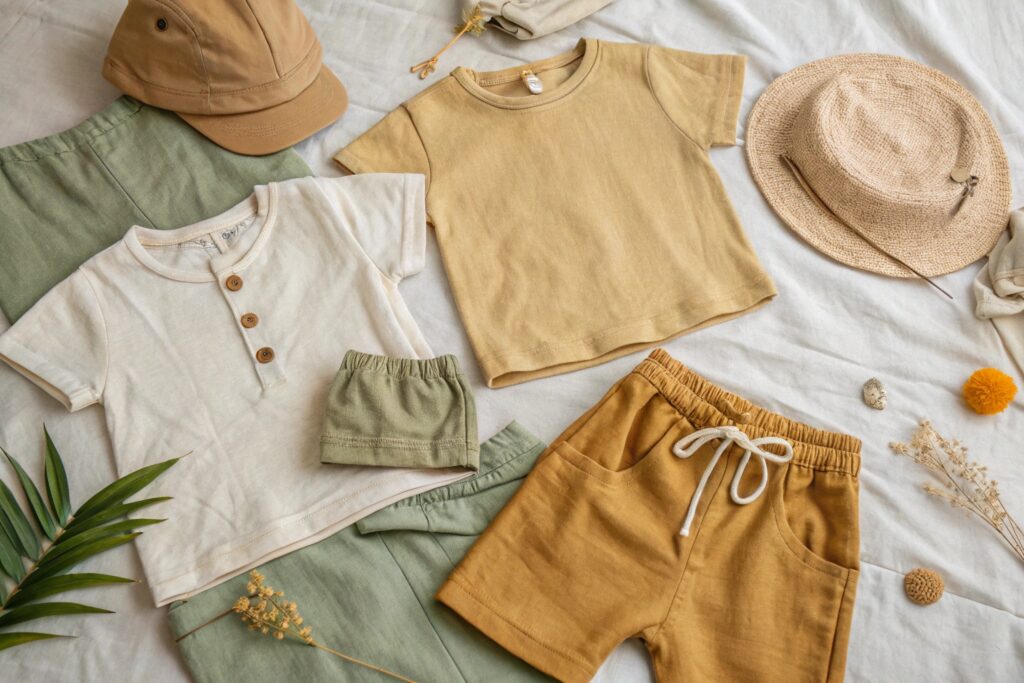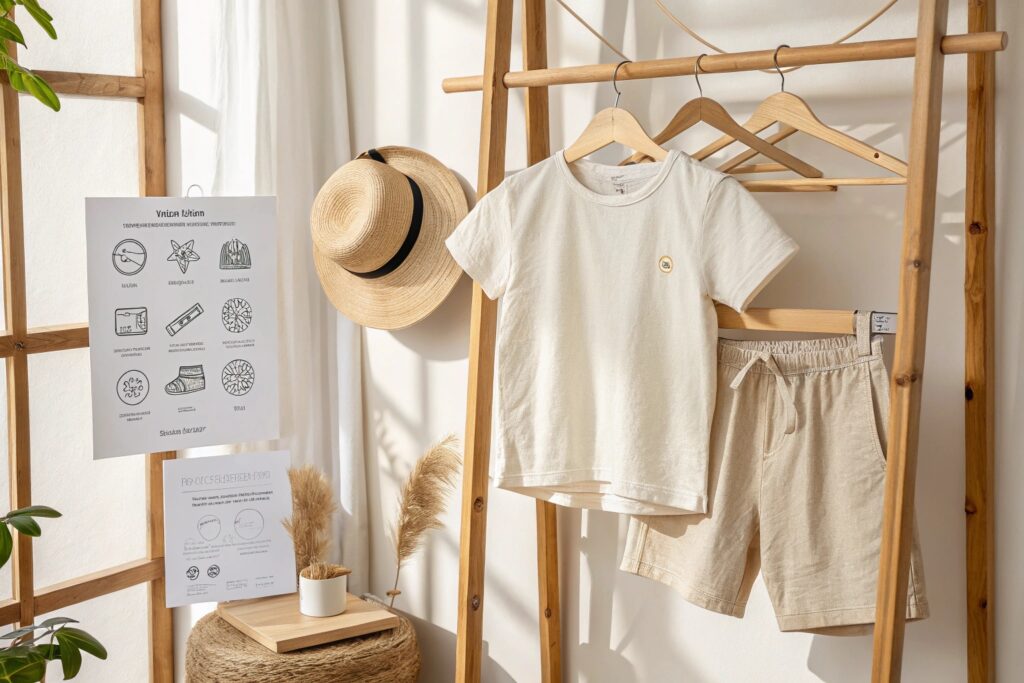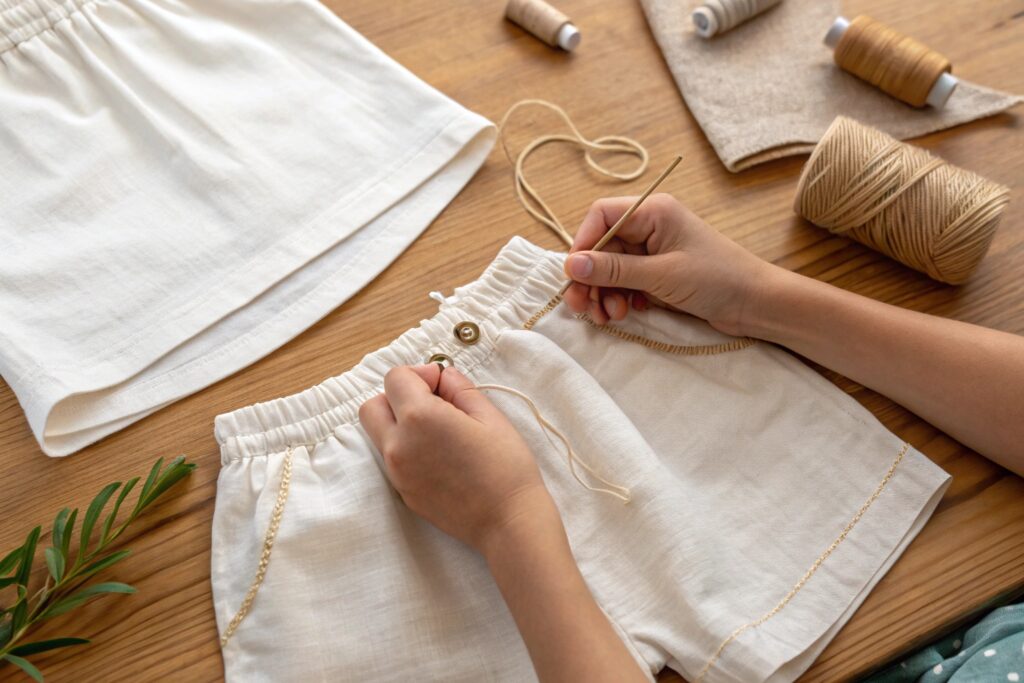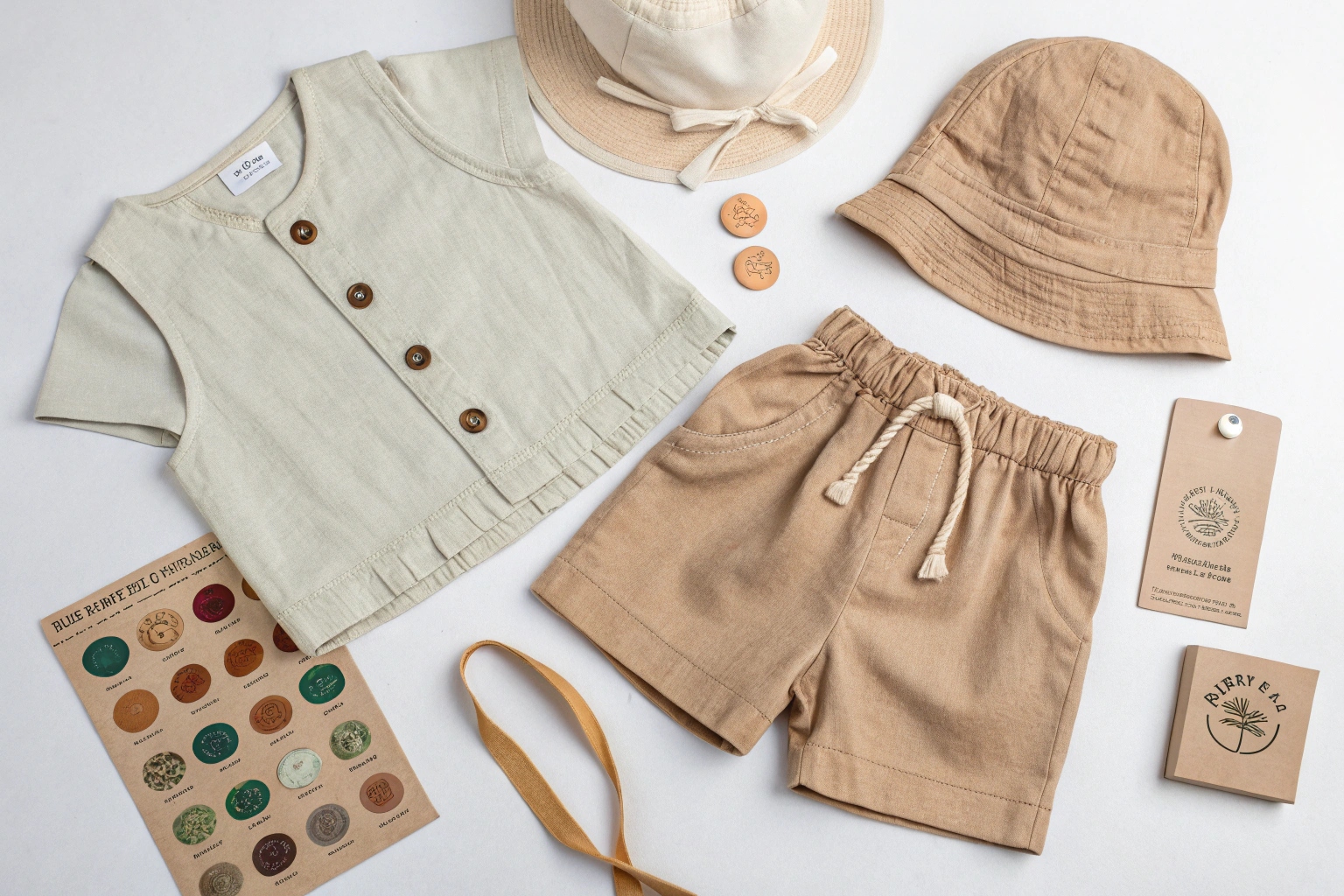A green label doesn’t make a garment sustainable—true impact lies in materials, production, and how long that item stays in use.
A truly sustainable kidswear capsule combines eco-friendly materials, ethical production, credible certifications, and durable design to minimize waste and maximize environmental benefits.
With so many brands claiming “green,” it’s time we break down what that actually means—and how to build kidswear capsules that truly live up to the name.
Key Materials Used in Eco-Friendly Kids Capsules
Not all “natural” fabrics are created equal—some pollute more than they help.
Sustainable kids capsules rely on materials that are renewable, biodegradable, low-impact in processing, and built to last through multiple washes and wear cycles.

What are the most reliable fabrics for building truly green kidswear?
At Fumao Clothing, we’ve tested dozens of fabrics to find the best mix of eco-impact and wear durability. Here are the top choices we recommend for sustainable kidswear capsules:
| Material Type | Eco Benefits | Best Uses |
|---|---|---|
| Organic Cotton | No pesticides, lower water use | Everyday wear, tops, pajamas |
| TENCEL™ Lyocell | Made from wood pulp, closed-loop processing | Dresses, shirts, soft leggings |
| Recycled Polyester | Diverts plastic waste, durable | Jackets, activewear, linings |
| Hemp | Low-water crop, naturally antibacterial | Pants, outerwear, layering pieces |
| Bamboo Viscose | Renewable, silky-soft, good breathability | Bodysuits, babywear |
The key is not just sustainability, but performance. We recommend blends like cotton-modal or recycled poly-elastane to ensure stretch, wash-resilience, and color retention.
Capsule wardrobes require garments that survive long-term use. That’s how you reduce replacements—and emissions.
Why does fabric longevity matter more than recyclability in kidswear?
A garment made from recycled content that only lasts 3 wears still ends up as waste. True sustainability requires both input quality and use duration.
One of our clients made the switch from 100% organic cotton to a modal-cotton blend for their playwear capsule. Result: less shrinkage, less pilling, and a 2x longer wear lifespan. Their carbon footprint per piece dropped by 40%.
Kids grow fast. But with size-flexible, wash-durable fabric, the garment outlives the child—and that’s sustainable design.
How to Verify Sustainability Claims in Kidswear
Words like “eco,” “green,” and “natural” don’t mean much without proof.
To verify sustainability claims in kidswear, look beyond marketing and check for material transparency, production location details, lifecycle data, and third-party certifications.

What red flags signal greenwashing in children’s fashion marketing?
Many brands use vague terms with no proof. Watch for:
- “Eco-friendly” without listing material sources
- “Sustainable” with no data on factory or worker policies
- “Natural” fibers that are conventionally farmed with heavy pesticide use
- Use of recycled polyester without recyclability planning post-use
We help our clients avoid these pitfalls by offering full traceability reports—from yarn mill to cutting table. One American brand we supply even includes QR codes on their garment tags, linking to a breakdown of the capsule’s sourcing and labor footprint.
Transparency builds trust—and loyalty from conscious parents.
How can brands communicate their sustainability journey honestly?
Honesty wins over perfection. Parents don’t expect every brand to be 100% zero-waste. They want to see clear steps.
Here’s a sample brand communication structure we helped develop:
What We’ve Done: 95% of our kidswear is made with GOTS-certified cotton.
What’s In Progress: We’re replacing all polybag packaging with compostables by 2026.
What’s Next: Partnering with a take-back program to enable full recycling.
Clarity like this helps customers align with your mission—and forgive the areas still evolving.
The Role of Ethical Production in Green Capsules
Green fabrics don’t matter if the human cost is too high.
Ethical production ensures sustainable kidswear is made under safe, fair conditions, protecting both the planet and the people behind each garment.

What defines ethical manufacturing in children’s apparel?
Ethical production includes:
- Fair wages for all workers involved
- Safe working environments that follow international labor standards
- No child labor or forced labor at any stage of the supply chain
- Reasonable working hours and job security
- Local economic support through transparent sourcing
At Fumao Clothing, our factory partners are regularly audited for social compliance. We maintain third-party reports and welcome client visits. Several of our U.S. and European clients list these certifications directly on product pages to give their customers peace of mind.
An eco-friendly capsule made under unethical conditions isn’t truly green. Sustainability must be both environmental and social.
How can brands verify their suppliers follow ethical standards?
Look for globally recognized third-party certifications (covered below), and always request:
- Supplier audit reports
- Labor policy documentation
- Certifications tied to factories, not just fabric
We help new clients vet and onboard fully audited facilities, and we offer ongoing compliance management for those scaling up.
If you’re selling to eco-minded parents, factory ethics will come up. Be ready with proof—not promises.
Certifications to Look for in Sustainable Kids Clothing
Certifications aren’t just labels—they’re accountability.
Trusted certifications validate a brand’s sustainability claims, helping parents make informed decisions and ensuring that environmental and social standards are actually met.

What are the most important certifications for green kidswear capsules?
Here are the leading certifications and what they prove:
| Certification | Verifies | Ideal For |
|---|---|---|
| GOTS (Global Organic Textile Standard) | Organic fibers, chemical-free processing | All-organic cotton garments |
| OEKO-TEX Standard 100 | Free from harmful substances | Next-to-skin items (underwear, PJs) |
| Fair Trade Certified | Worker welfare and fair wages | Ethically-made products |
| B Corp Certification | Holistic social and environmental impact | Larger brand accountability |
| GRS (Global Recycled Standard) | Traceability of recycled content | Recycled polyester/nylon blends |
We help brands label and certify their capsule lines with the appropriate standards, based on material content and production source. Our audit-ready process makes compliance seamless.
How can parents use certifications to make better purchasing decisions?
Parents juggling budget, safety, and ethics don’t have time to research every garment. Certifications serve as shortcuts to trust.
We recommend our client brands display their certifications clearly:
- On hangtags
- On product detail pages
- Within “Our Process” or “How It’s Made” content sections
One partner of ours even includes a “What This Tag Means” pop-up on their website to explain each badge. It boosted conversion among eco-minded shoppers by 19%.
Certifications speak louder than green-colored fonts. Use them well.
Conclusion
A truly green kidswear capsule is more than a cute concept. It’s a full-circle commitment—from fabric to factory to family—that delivers value for people, planet, and every growing child.










